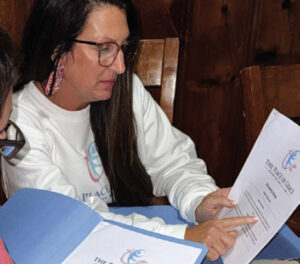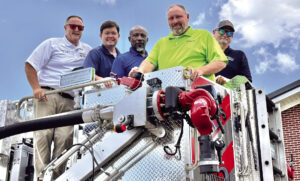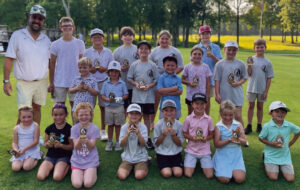Spruce Pine Pottery exhibit, symposium feature at Tennessee Valley art museum
“Art & Tradition at Spruce Pine Pottery” will be exhibited Sep. 22 through Nov. 1 at the Tennessee Valley Museum of Art, 511 N. Water St., Tuscumbia. The exhibit will represent the many potteries – places where clayware is made and fired – once found throughout Alabama.
Joey Brackner, director of the Alabama Center for Traditional Culture, said the story of Spruce Pine Pottery shows the end of small, traditional family pottery, as well as the rise of art pottery.
“Vases, statuary and fancy, decorated wares were added to the repertoire of small family potteries like Spruce Pine to make up for the declining sales of such items as stoneware storage jars, churns and chamber pots,” Brackner said.
Mary Settle Cooney, retired executive director of the museum called the exhibit “a little treasure in northwest Alabama.
“It’s part of our history,” Cooney added. “We are printing a catalog of the items, and it will be available for purchase in the museum. It will also become part of the state archives.”
Museum admission is $5 for adults and $3 for students and children, Monday through Friday from 9 a.m. to 5 p.m. The museum is closed on Saturday, and Sunday admission from 1-3 p.m. is free.
For additional information, call the museum at 256-383-0533 or visit tvaa.net, The TVMA Facebook page or the museum’s Instagram account, @the_tvma.
A related, free symposium titled “Clay Without Borders: The Historic Pottery of Northwest Alabama and Northeast Mississippi” will be held from 10 a.m. to 4 p.m. Sep. 21 at the museum. These topics will be covered more in depth during that program. An optional lunch is included; attendeens should call for reservations.
“Clay Without Borders” refers to craftsmen and their families traveling throughout the mid-South area in the 19th and early 20th centuries with little consideration to state lines.
“They were making a living while sharing their skills as they helped establish our regional pottery traditions,” Brackner said. “At Spruce Pine, members of the Long and Mills families brought the Mission Ware technique and certain sgrafitto,” or decoration made by cutting away parts of a surface layer, as of plaster or clay, to expose a different-colored base, “motifs they had helped to develop in Arkansas.”
Cooney said one of the focuses of the symposium will be the “interaction of skills, techniques and different ways of living among the people who came here from all over the Southeast.”
Nancy Sanford, interim director of the museum, said visitors will note the different styles of pottery that resulted from the variety of craftsmen. “As an example, some of the pieces have chunky, blue glazes, and others are very fine, almost like Wedgwood.”
Sanford said thanks to Alabama pottery collector Billy Weeks, “Art & Tradition at Spruce Pine Pottery” has been put together in time to be among Alabama’s sanctioned bicentennial events. About 50 pieces are part of the exhibit, from Weeks as well as five other collectors.
This program has been made possible by grants from the Alabama State Council on the Arts and the National Endowment for the Arts, the Alabama Humanities Foundation, Alabama 200 and the Colbert County and Franklin County Community Development Commissions.













